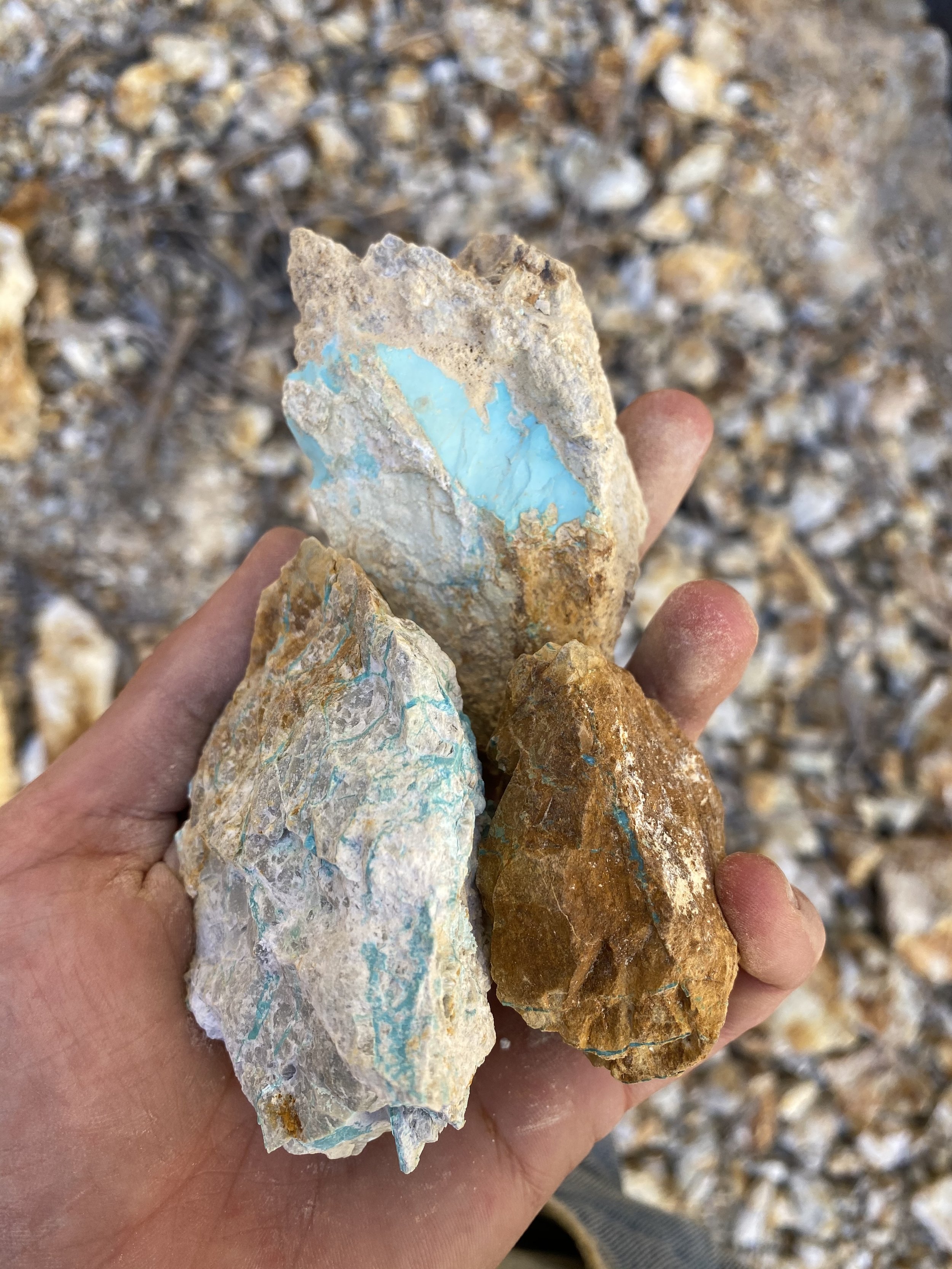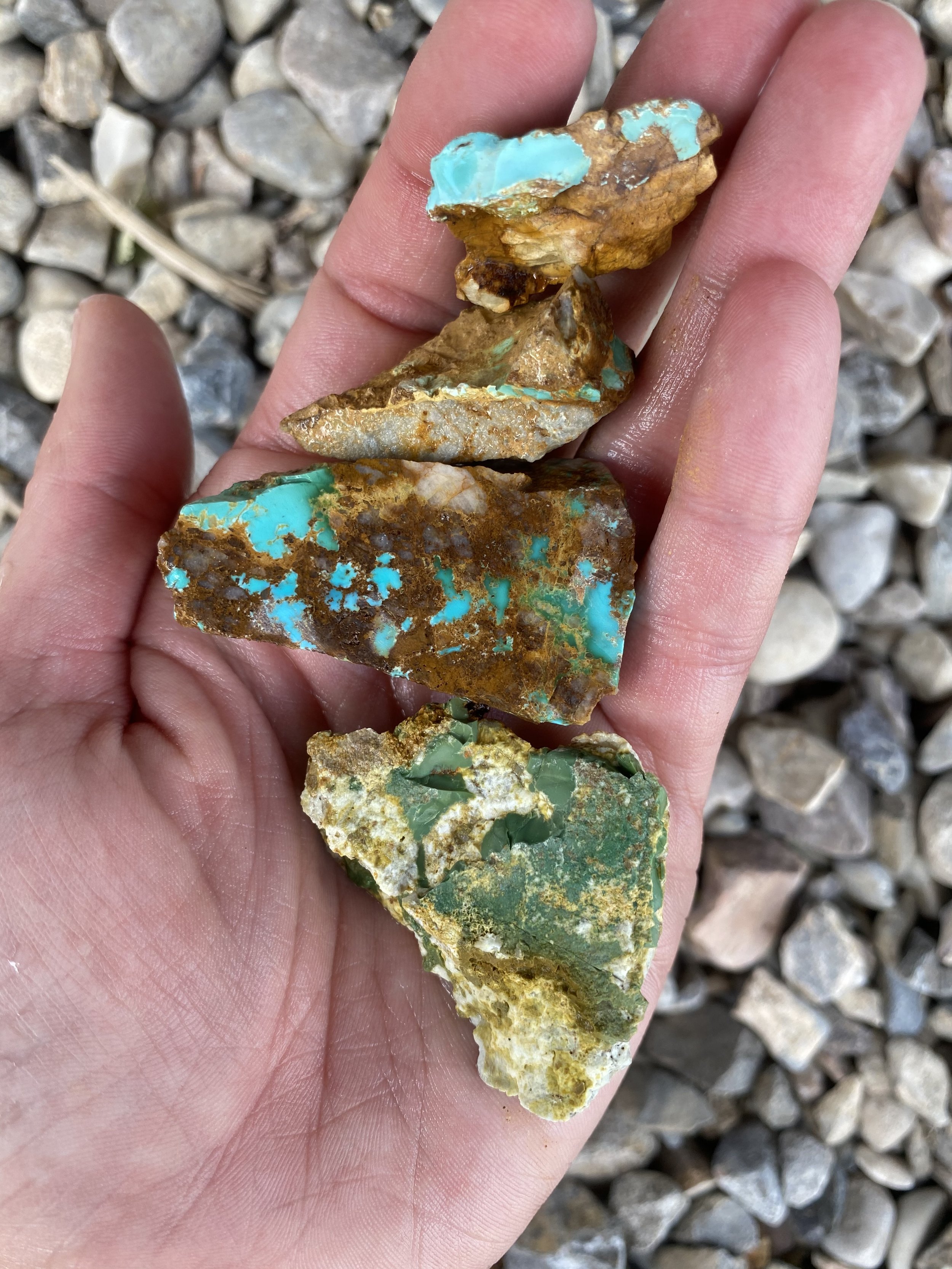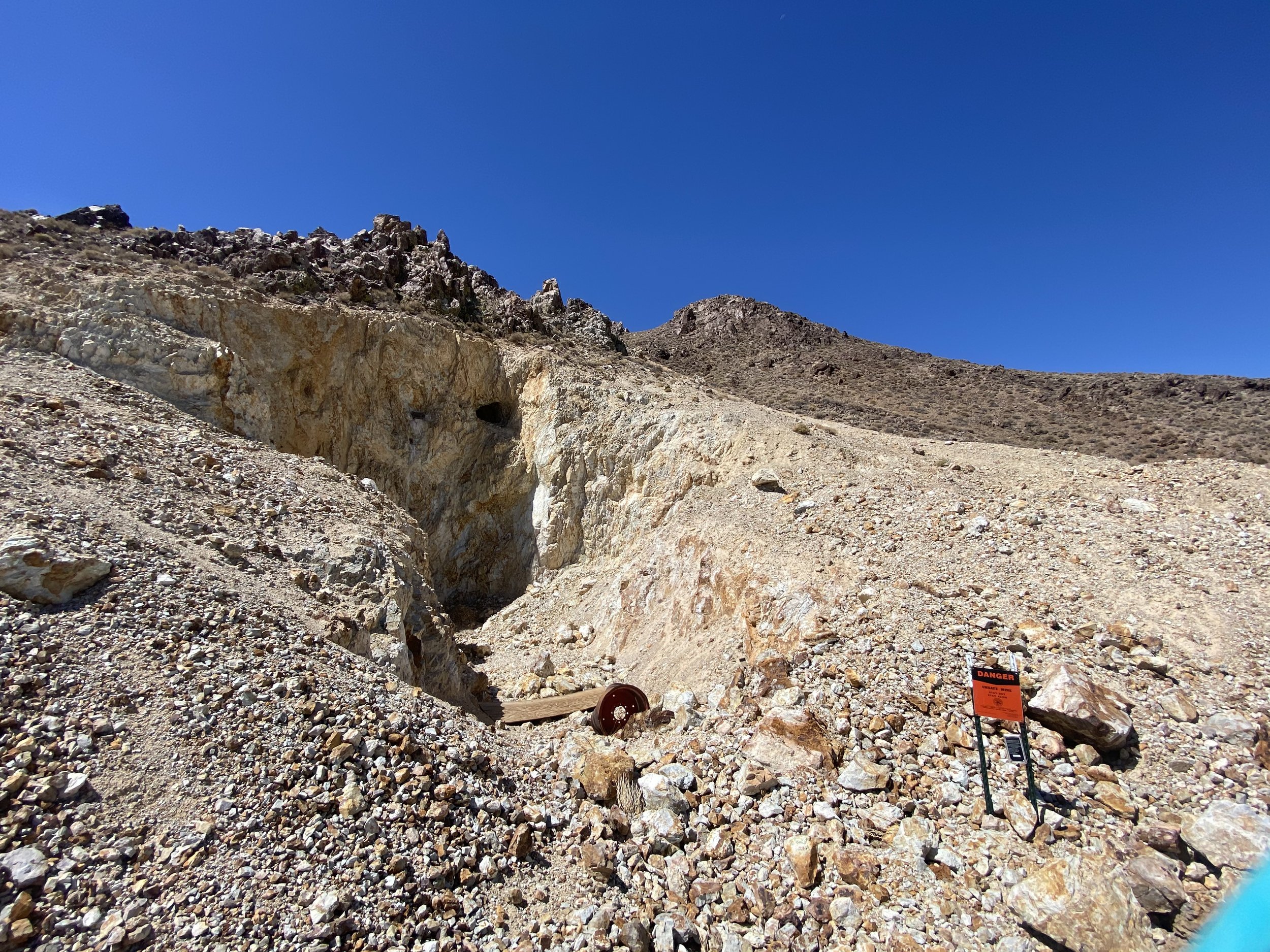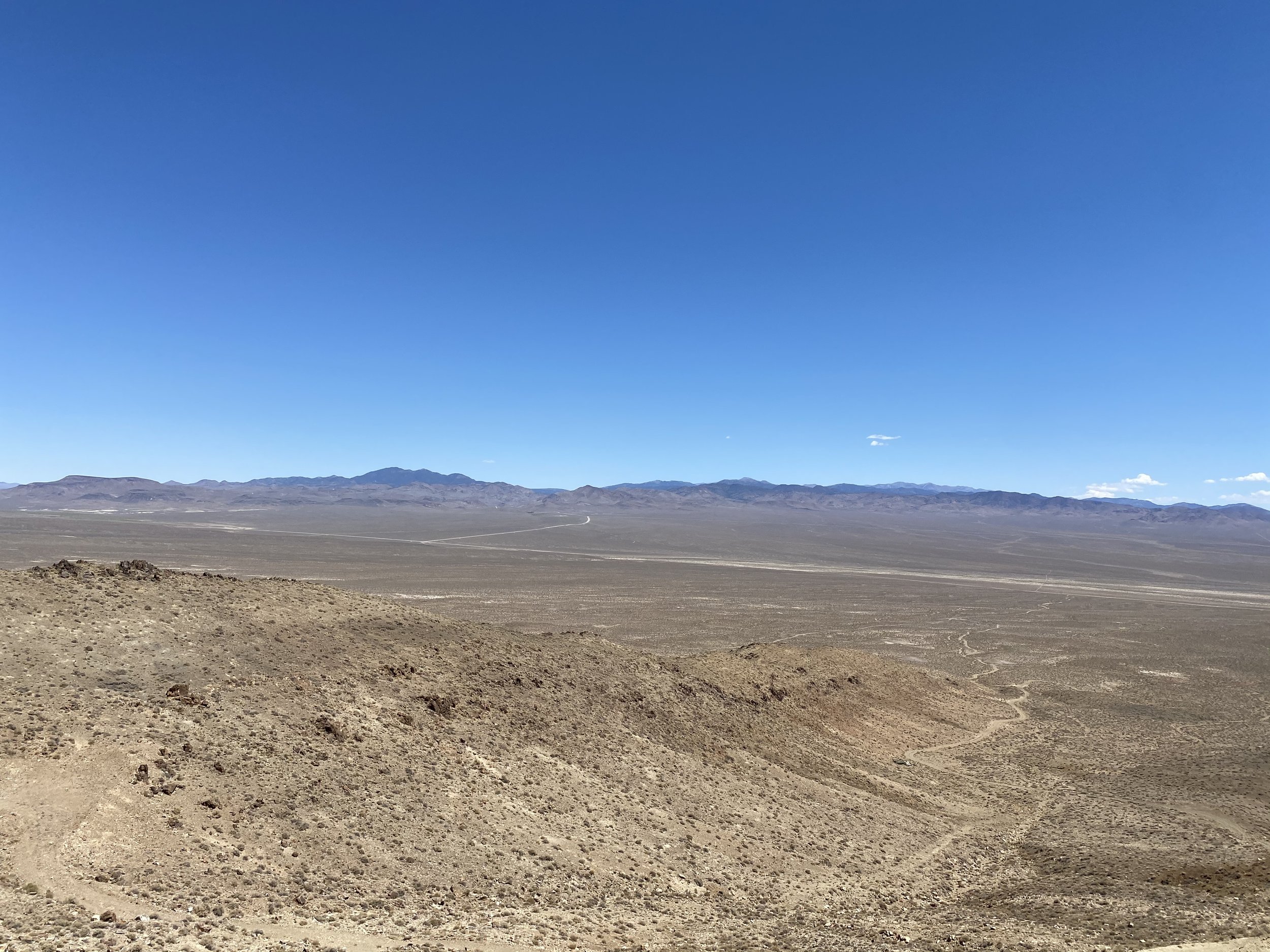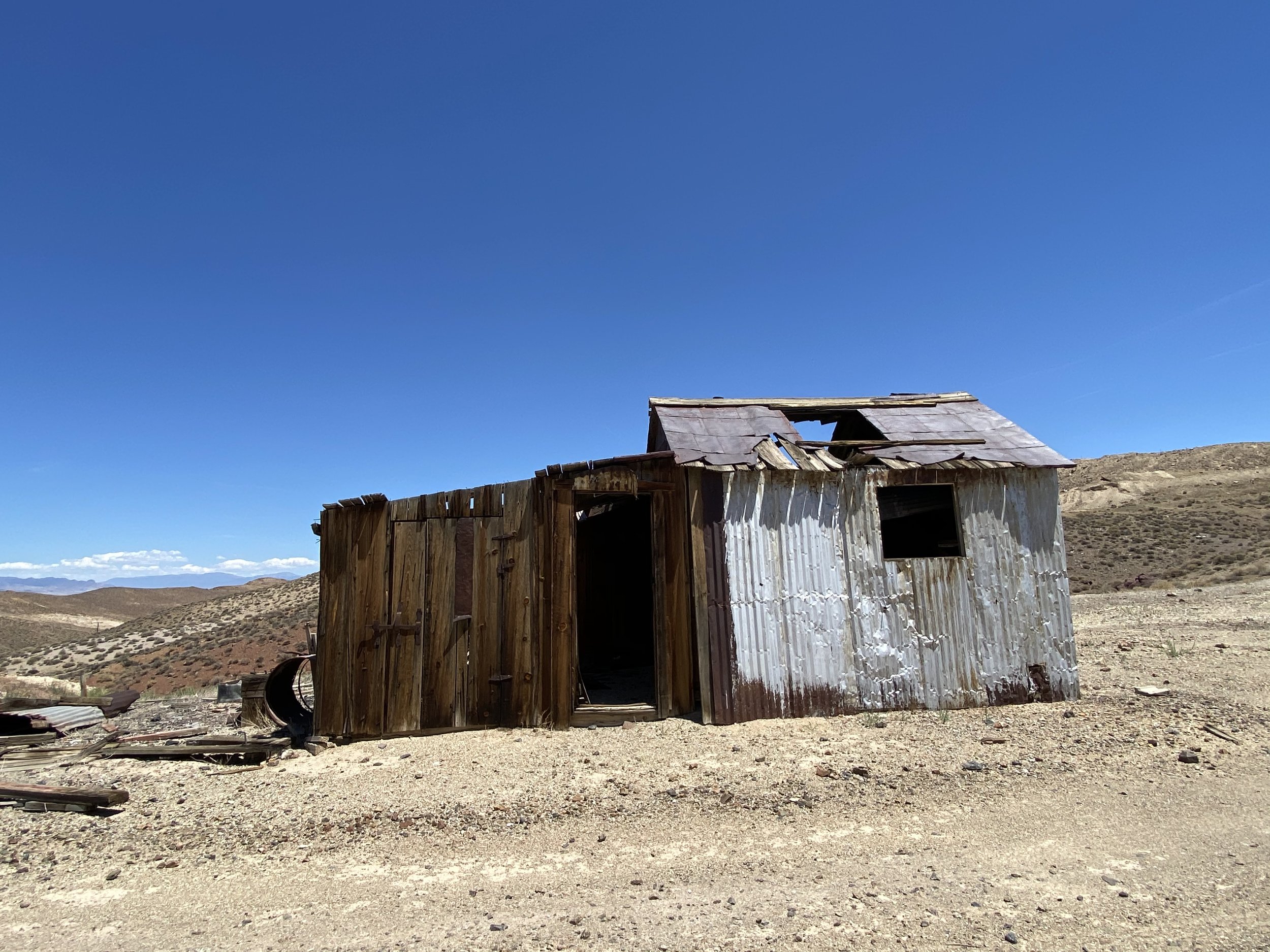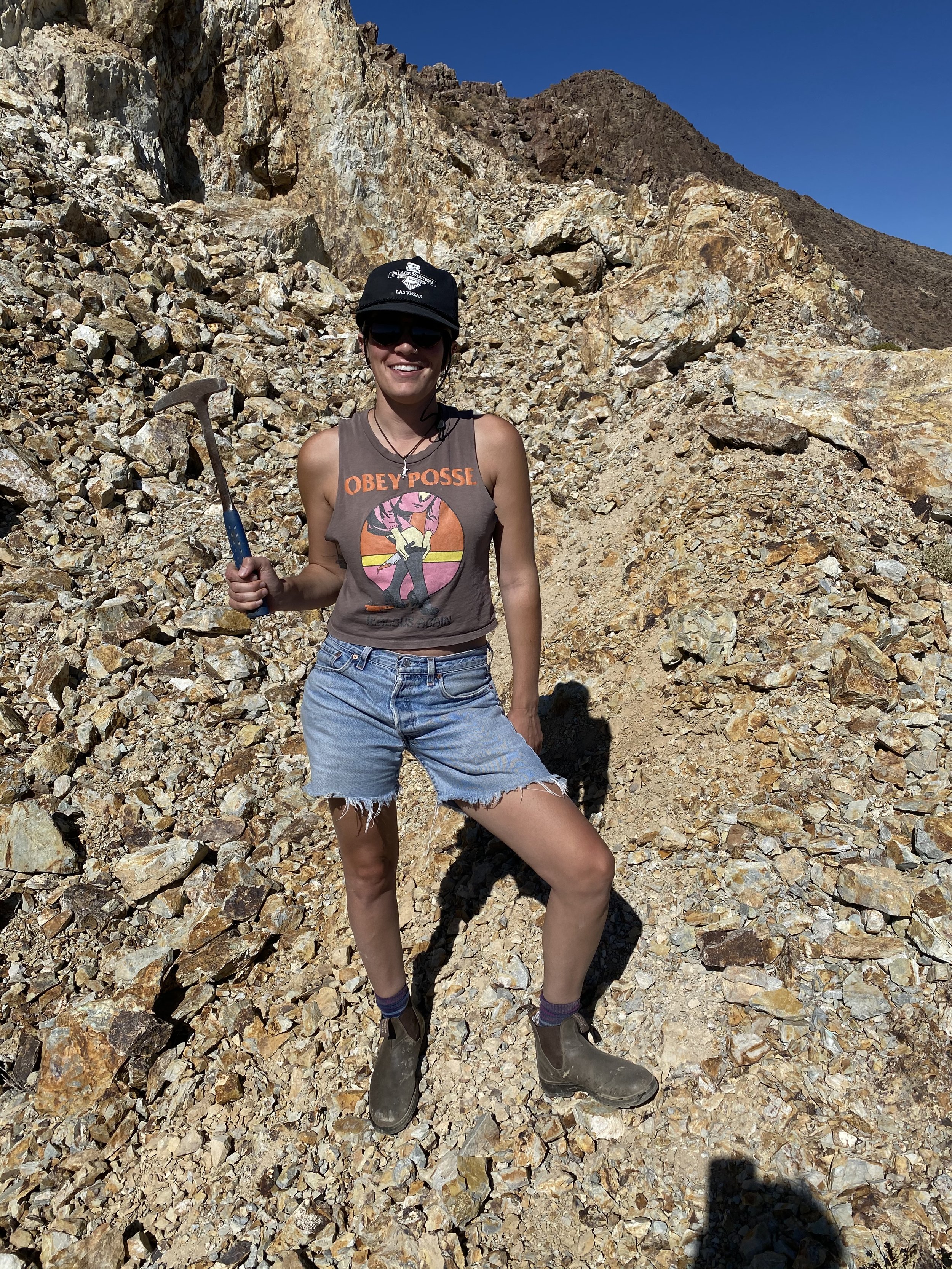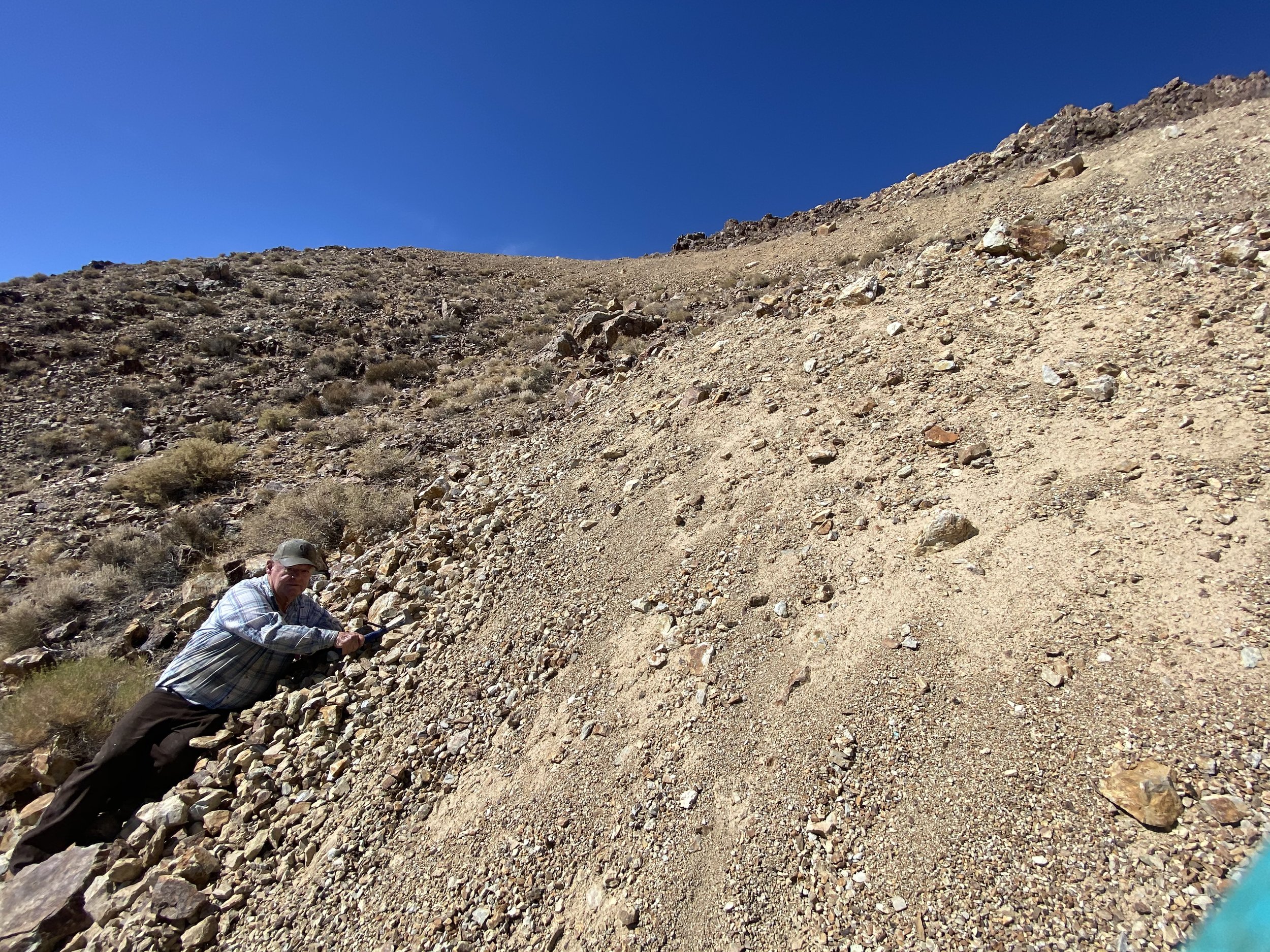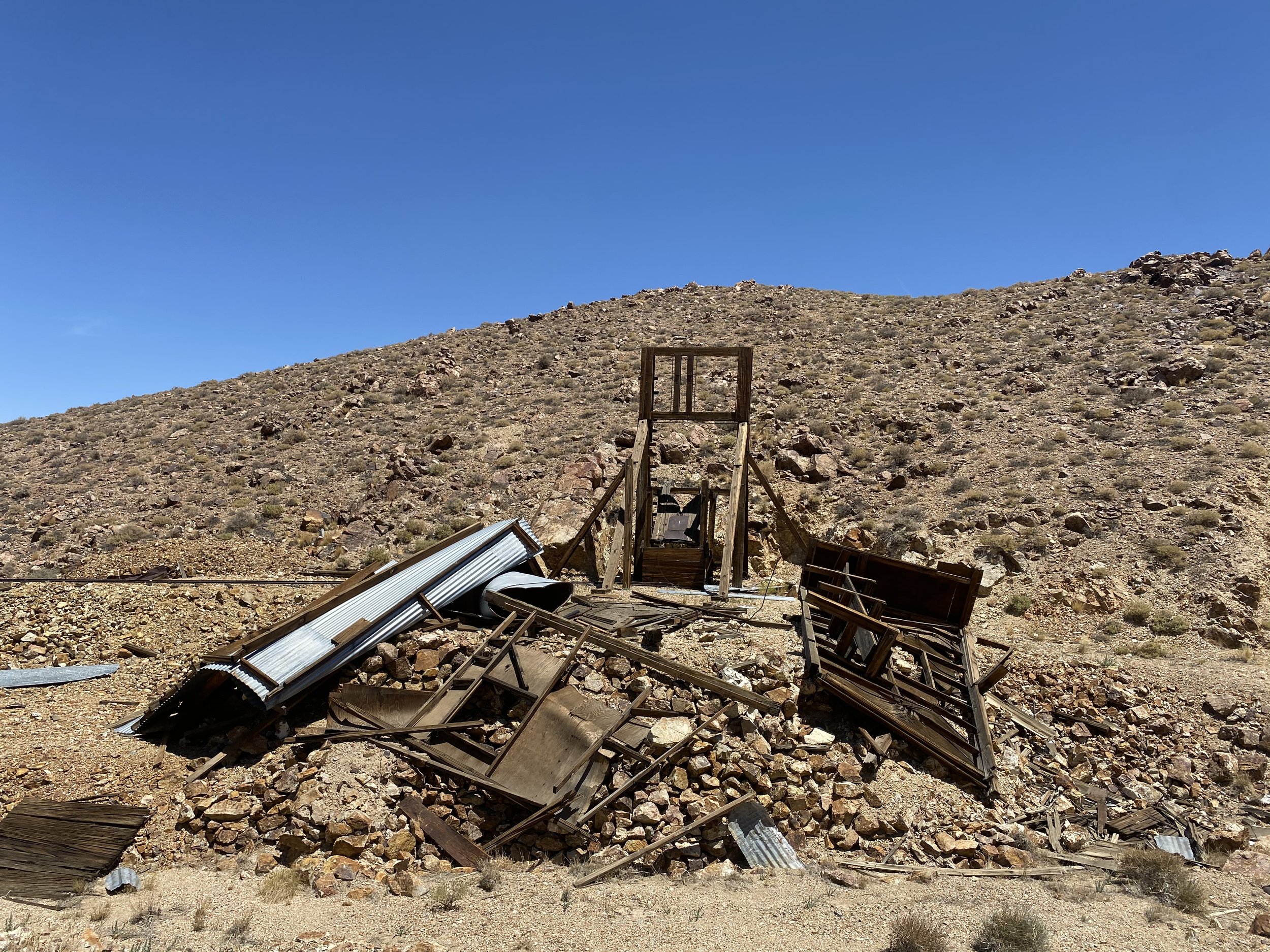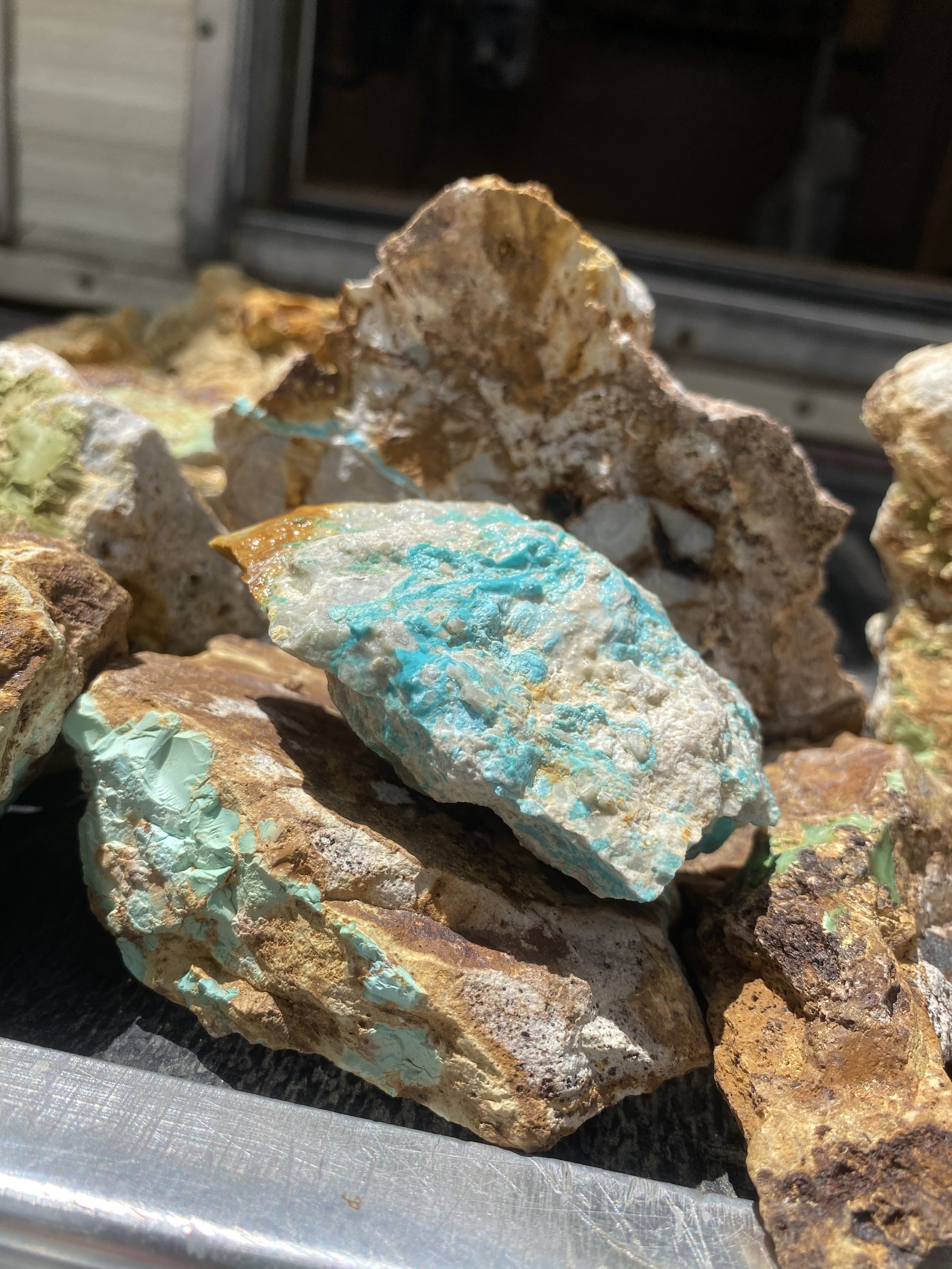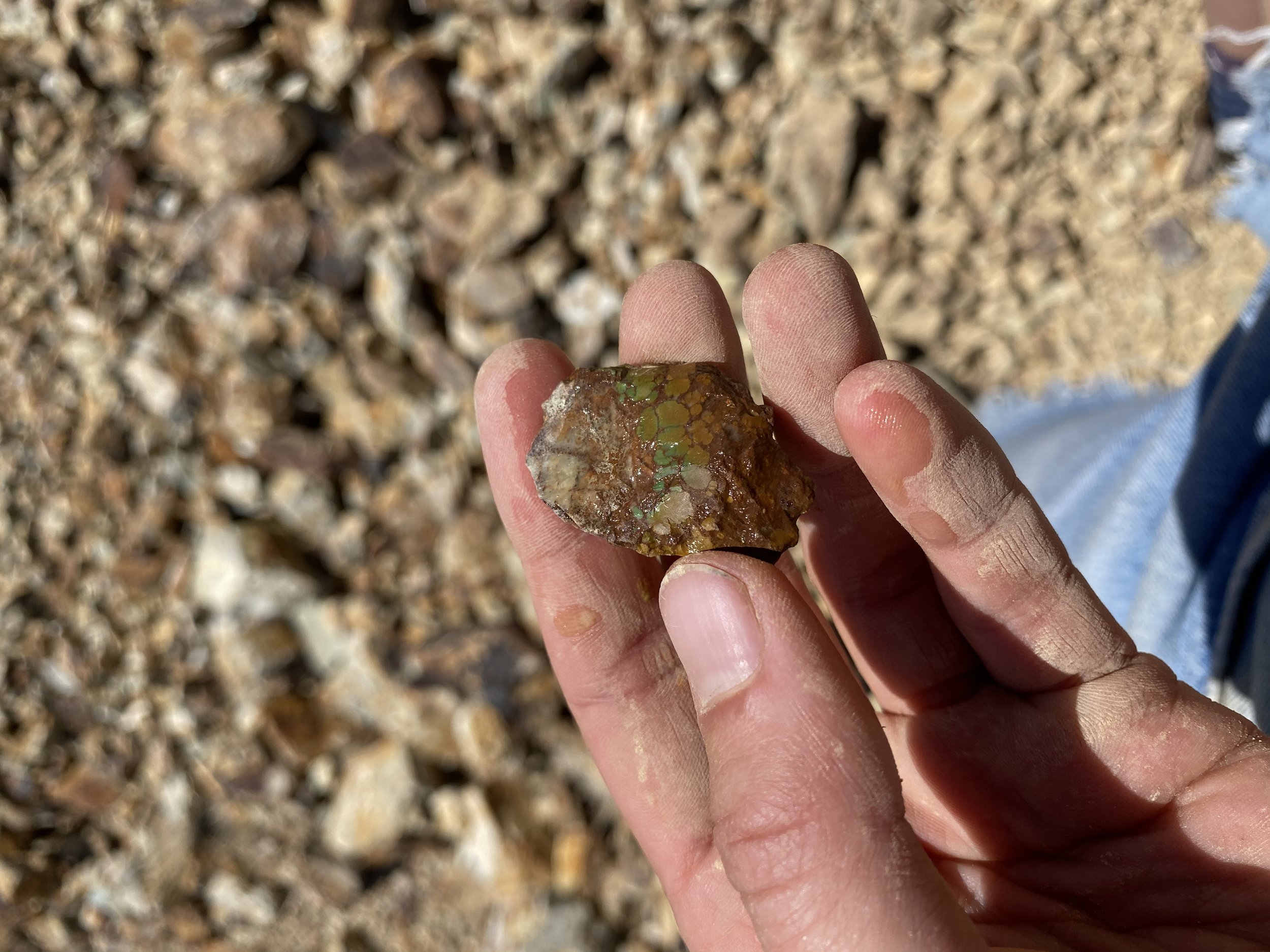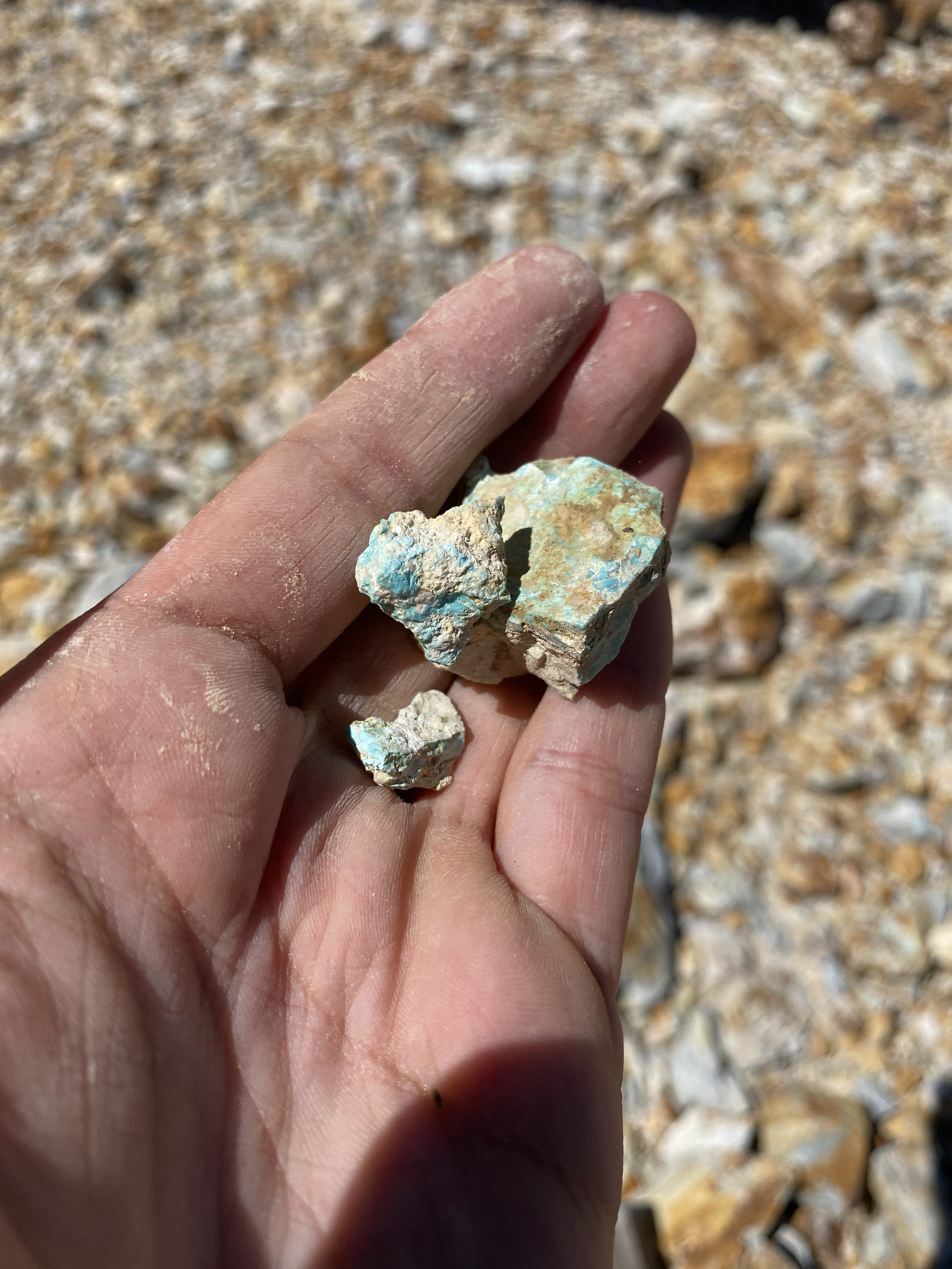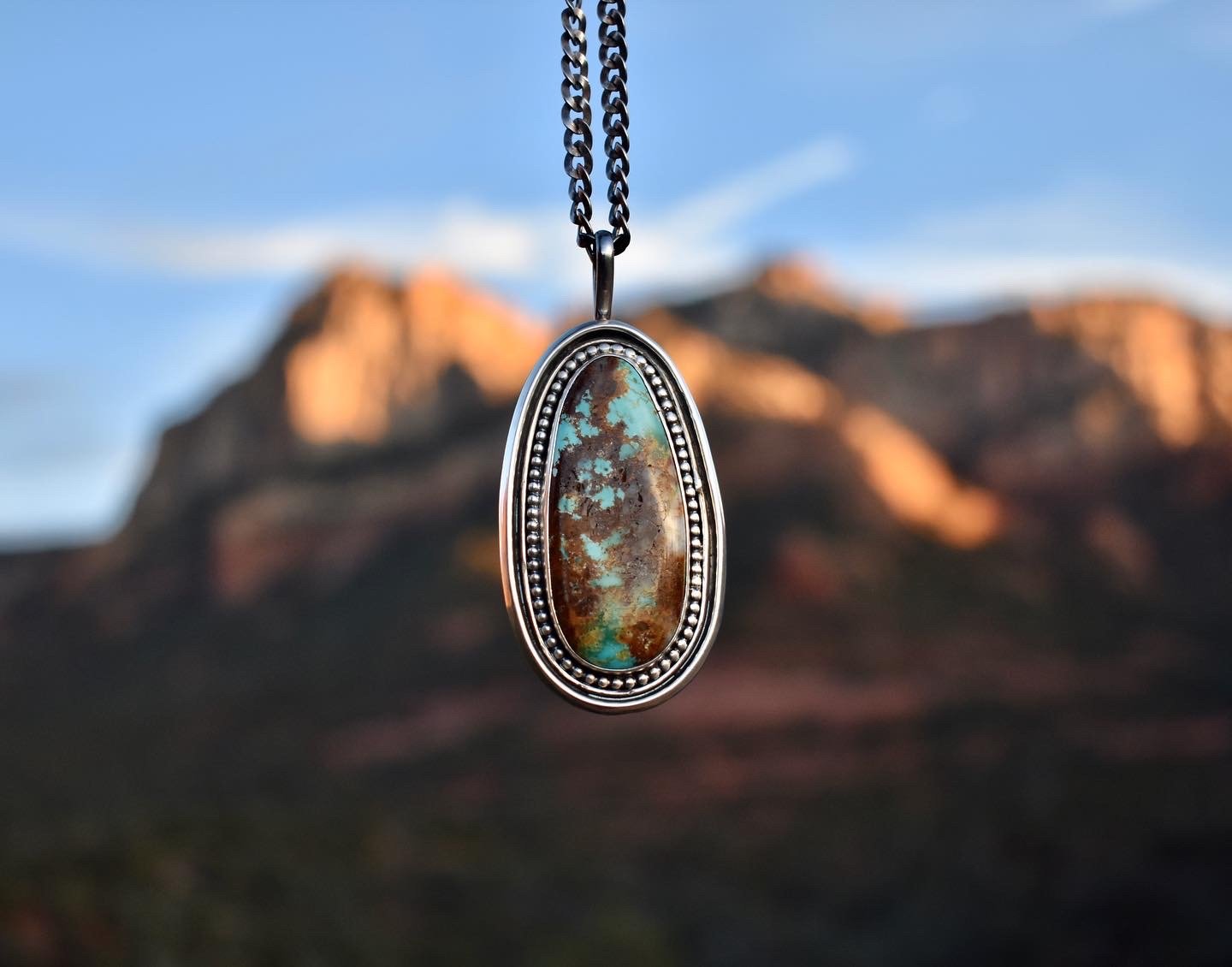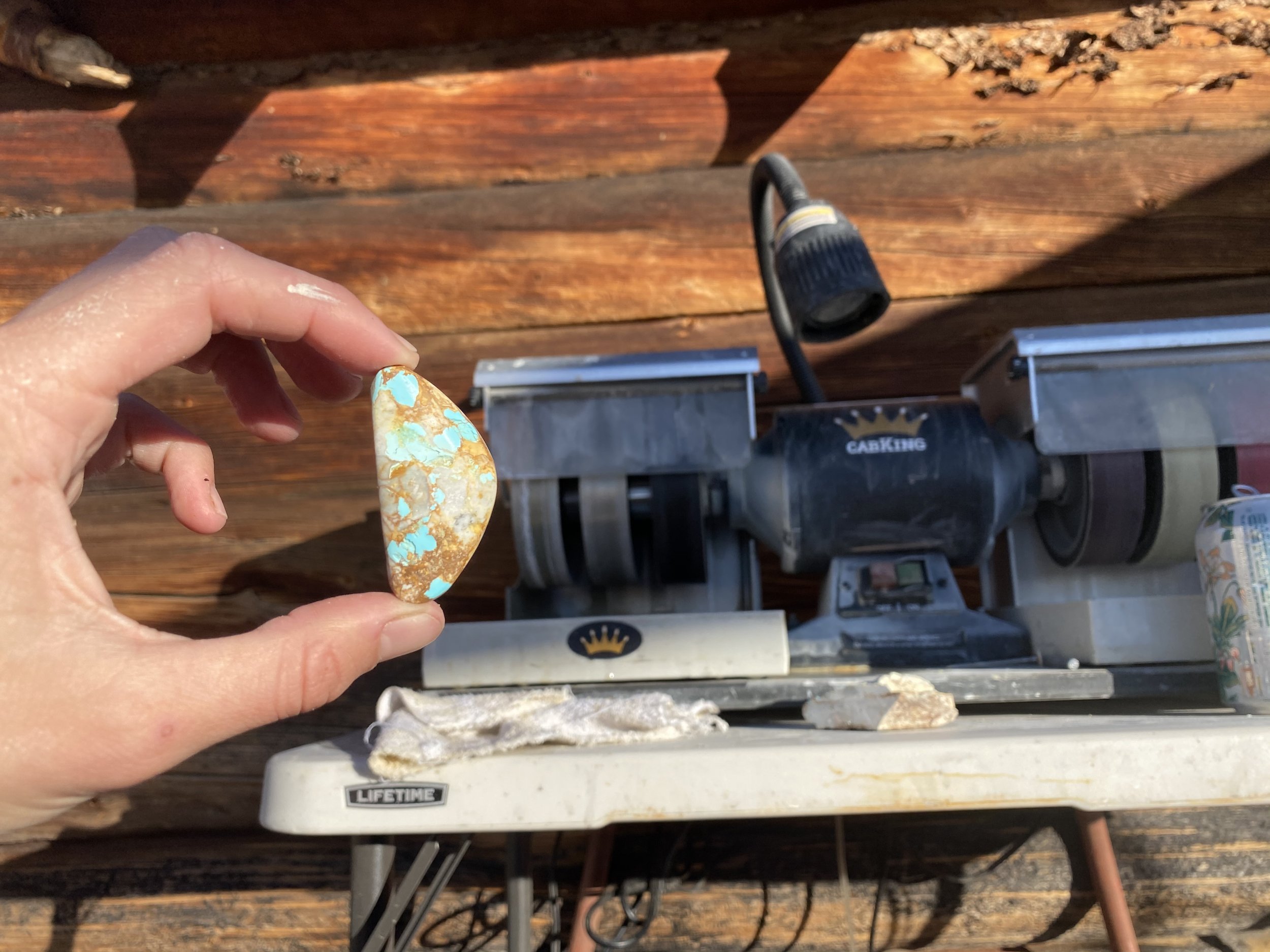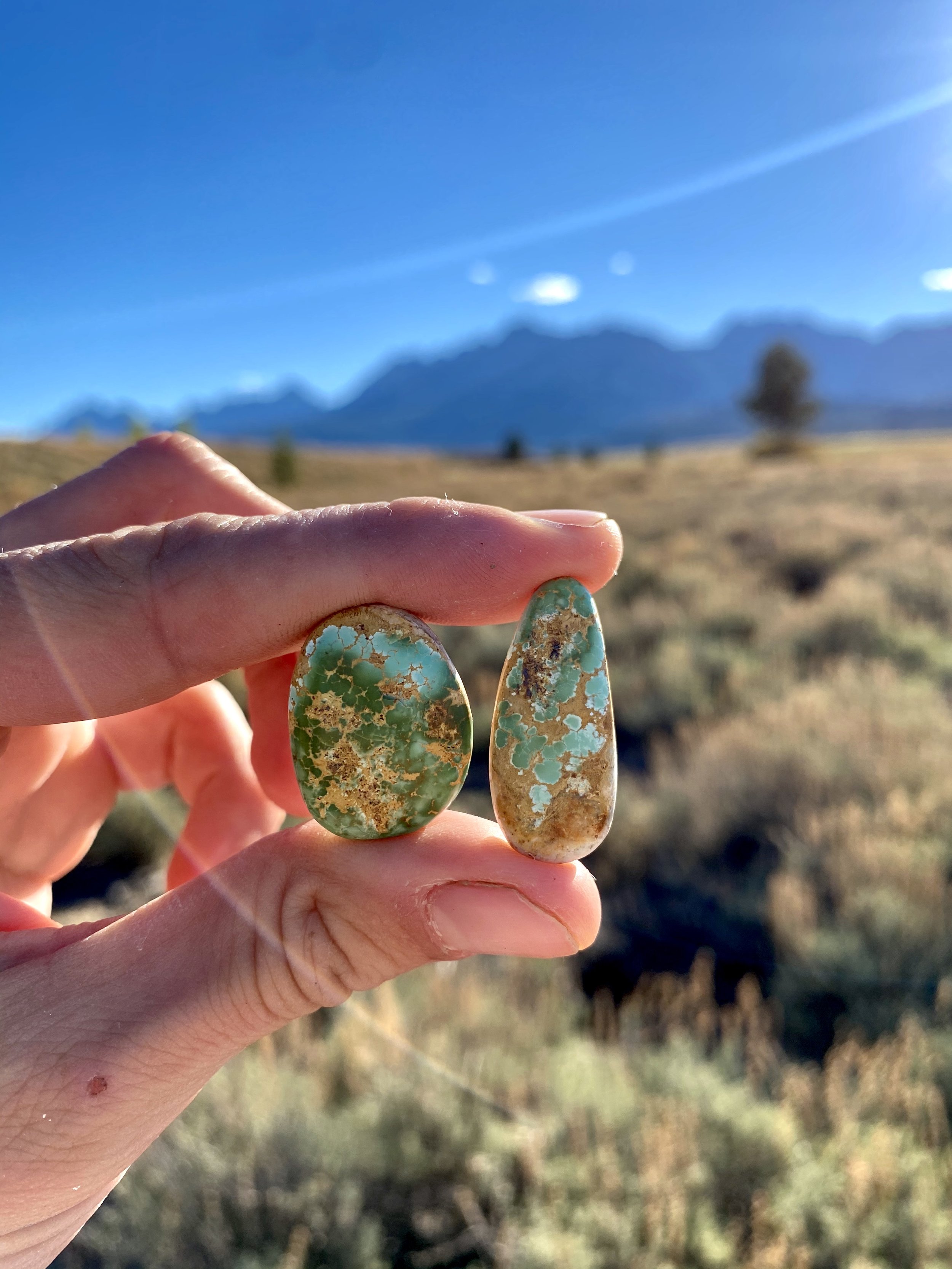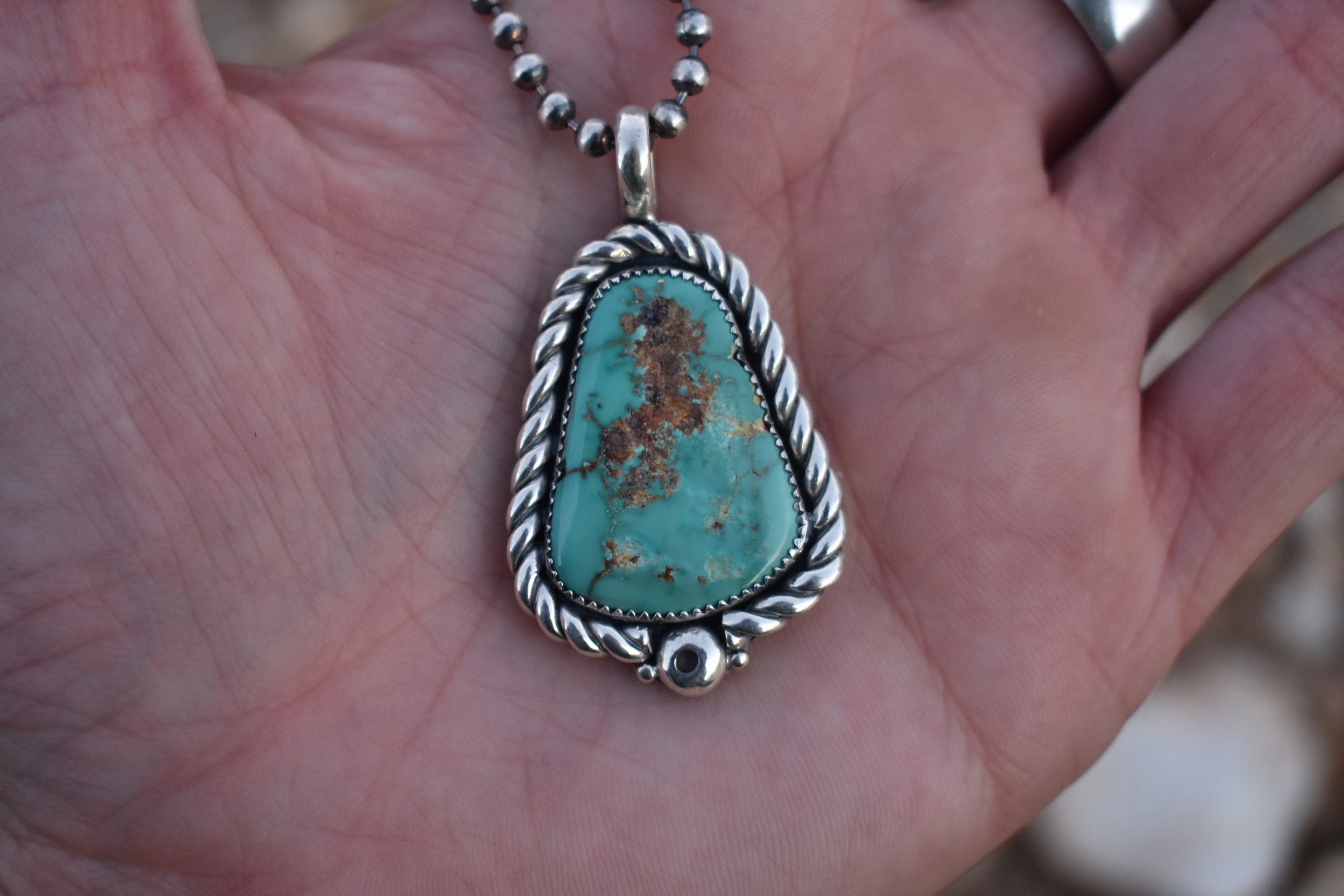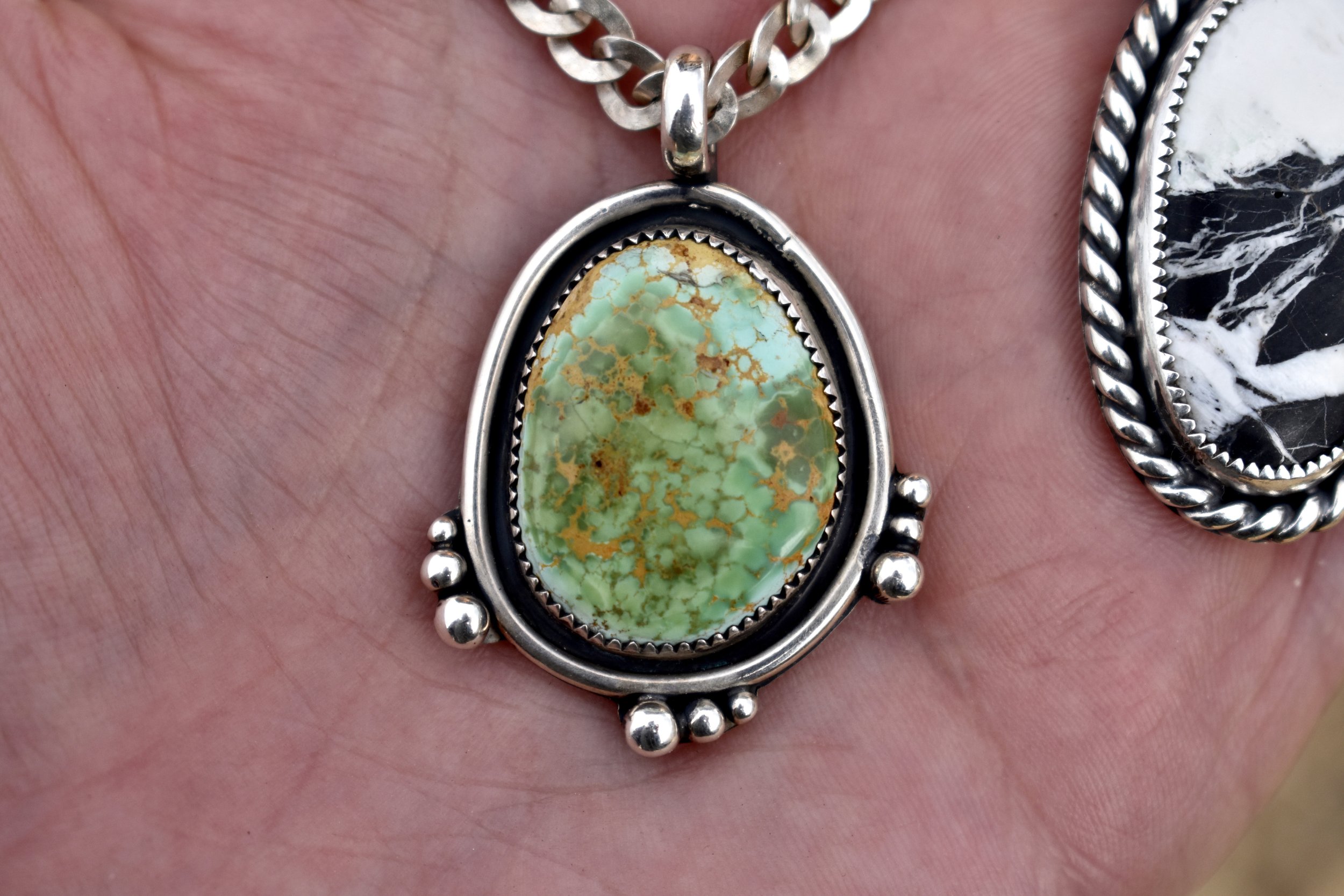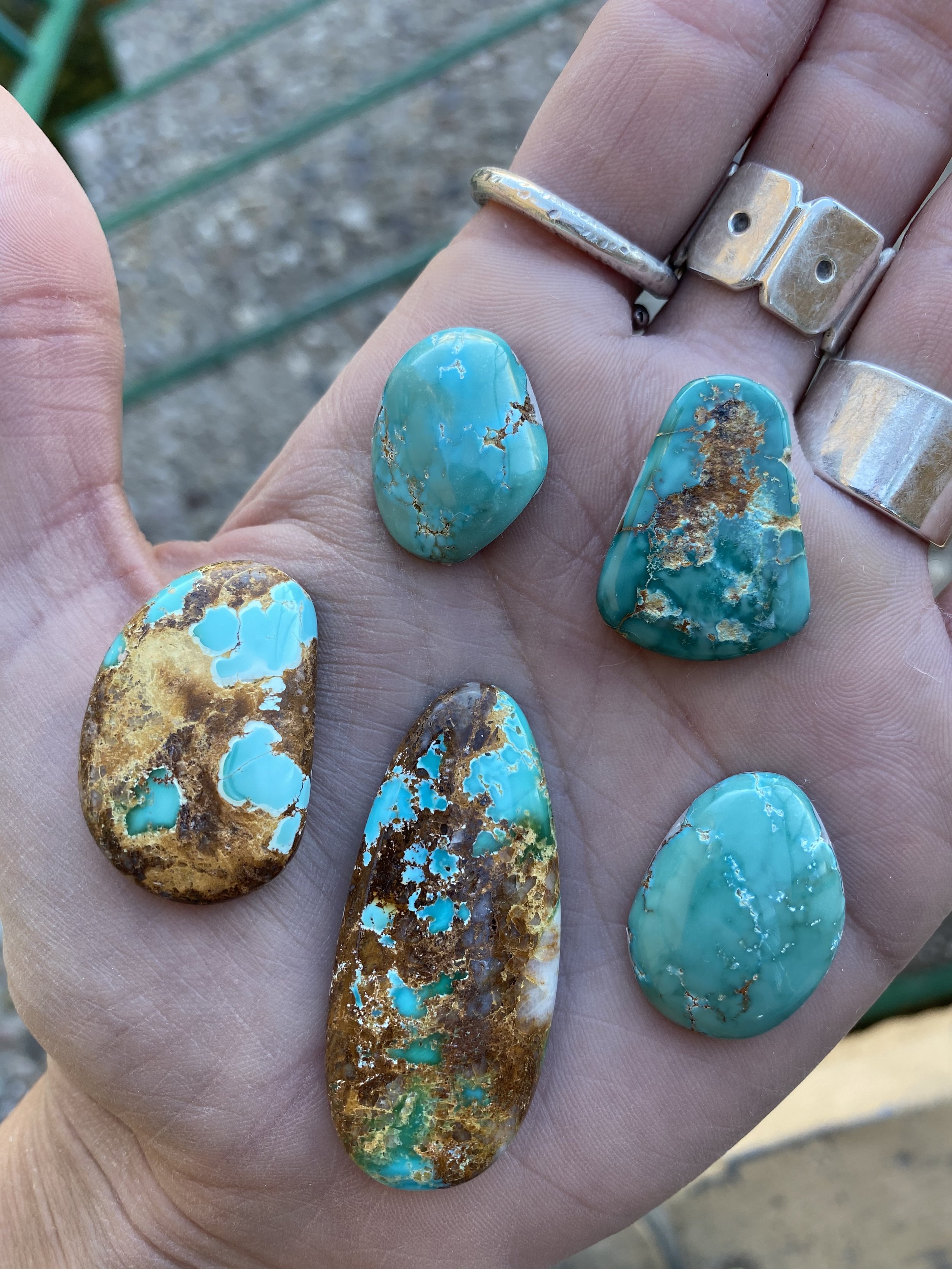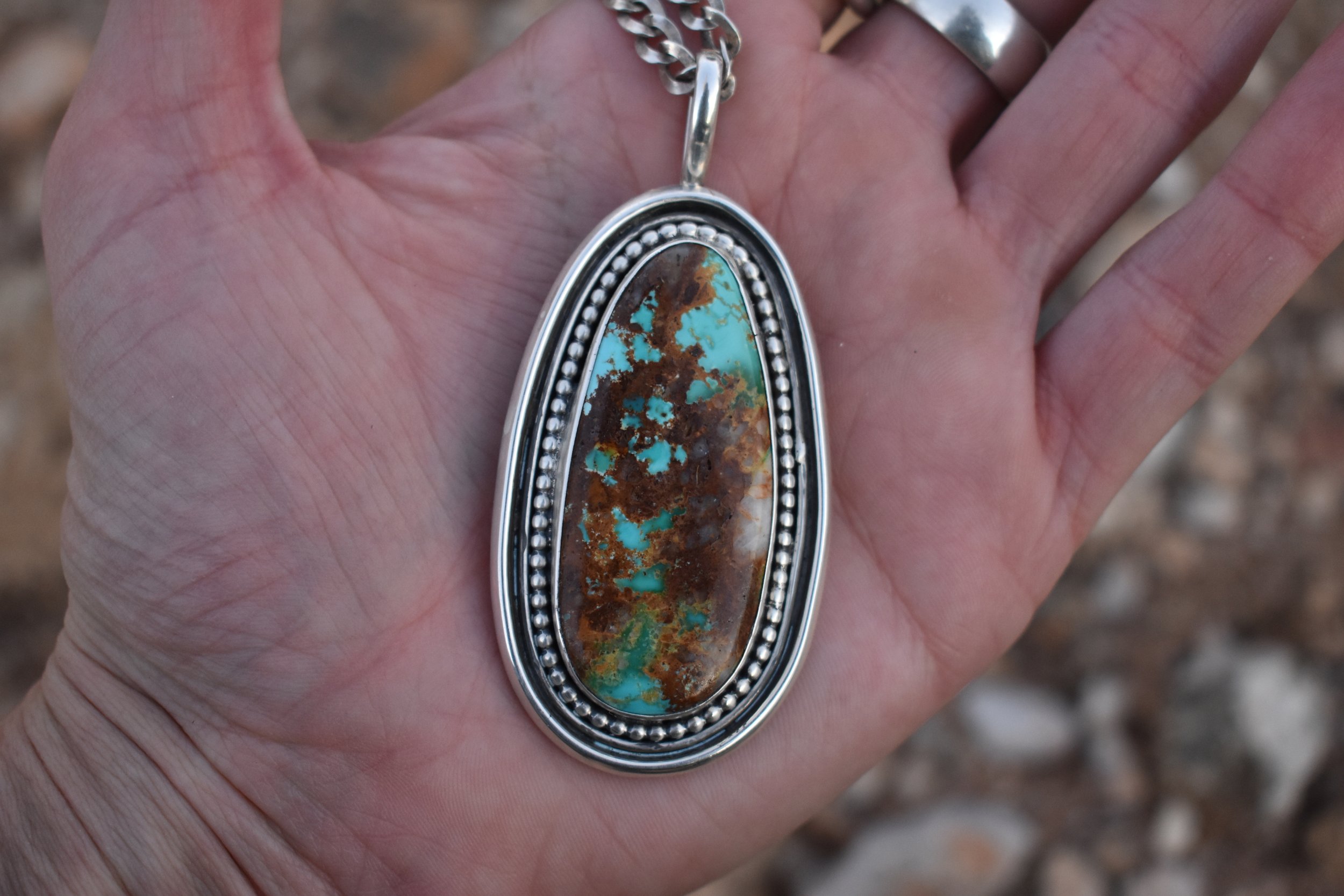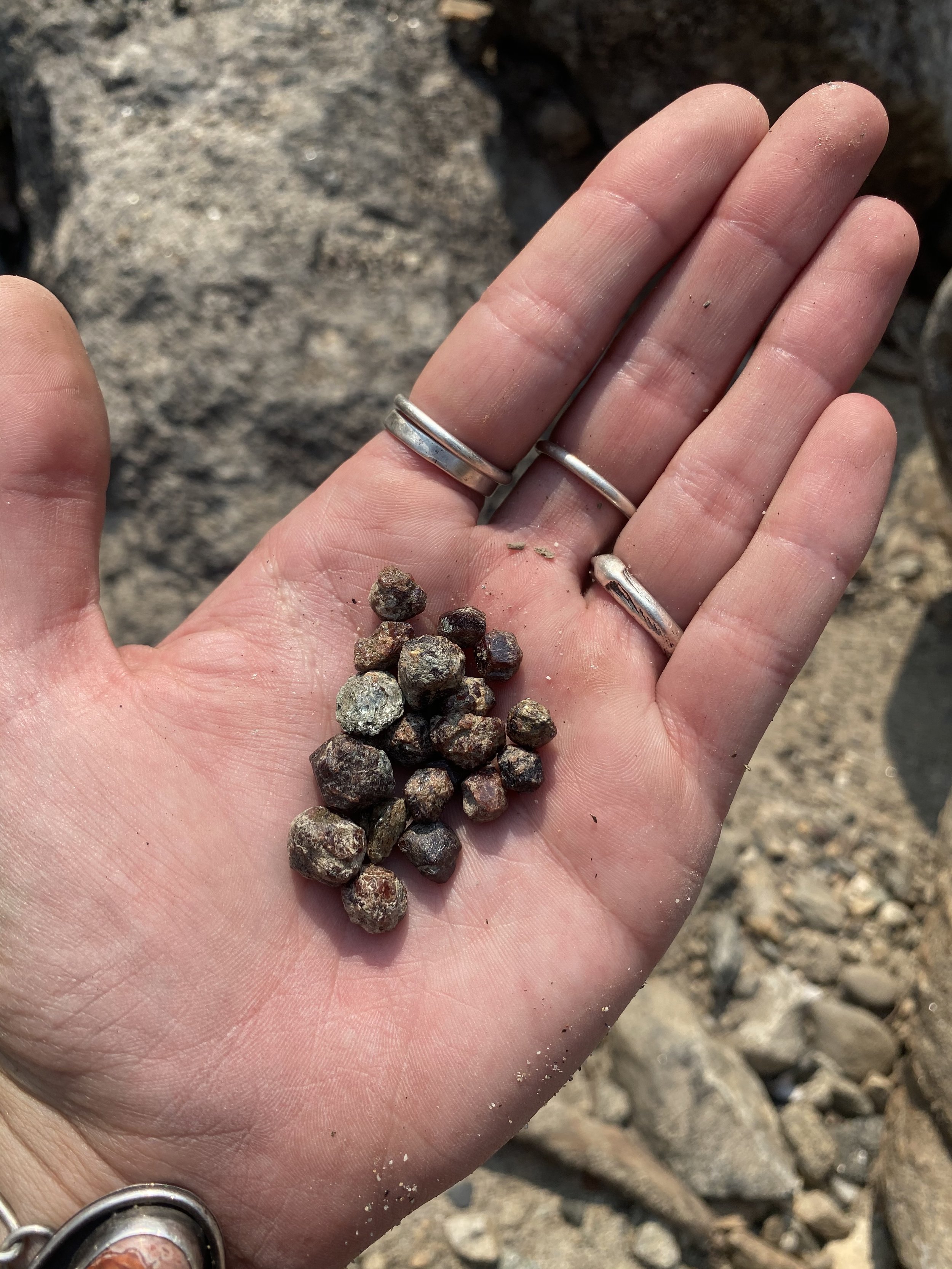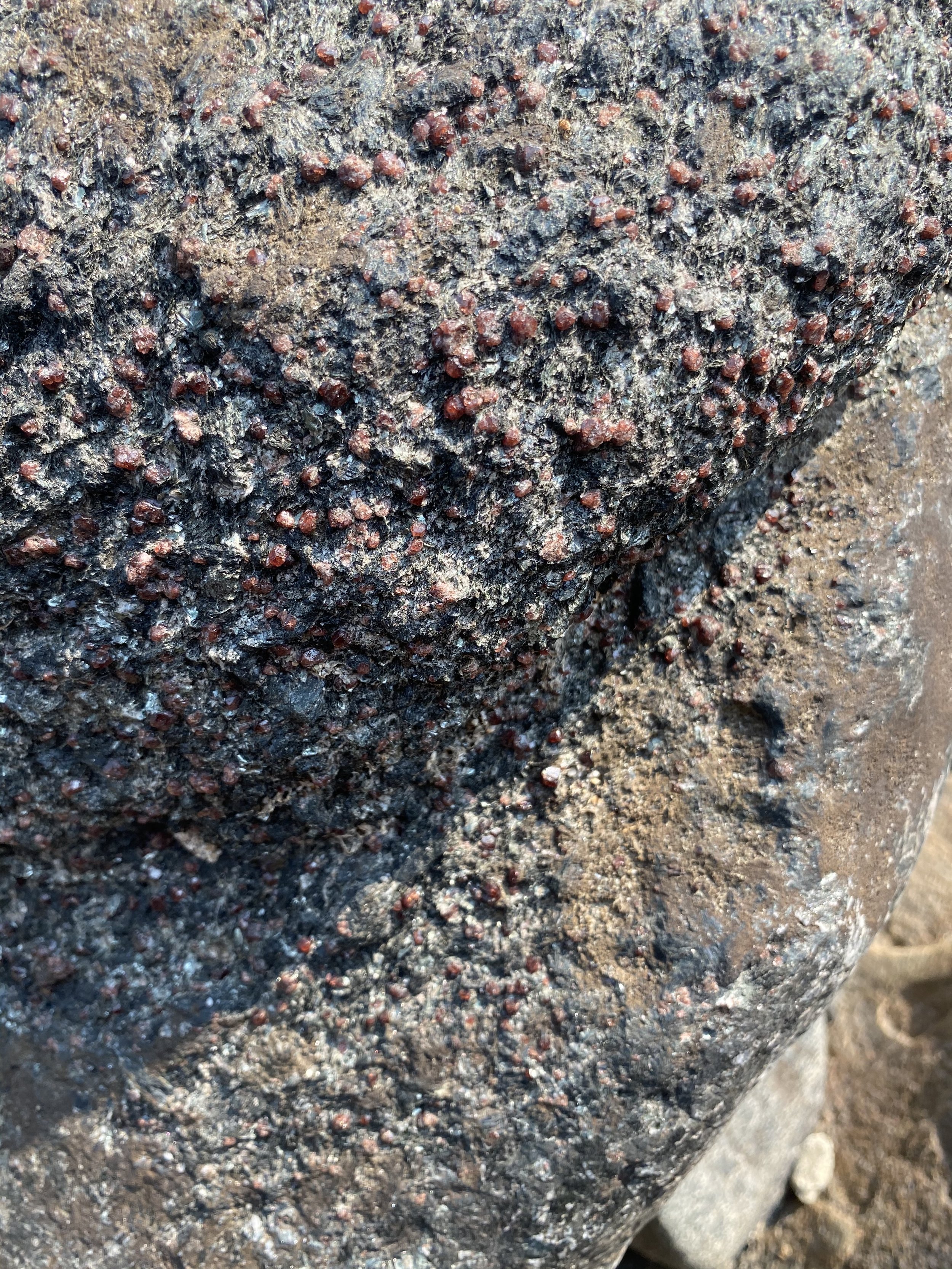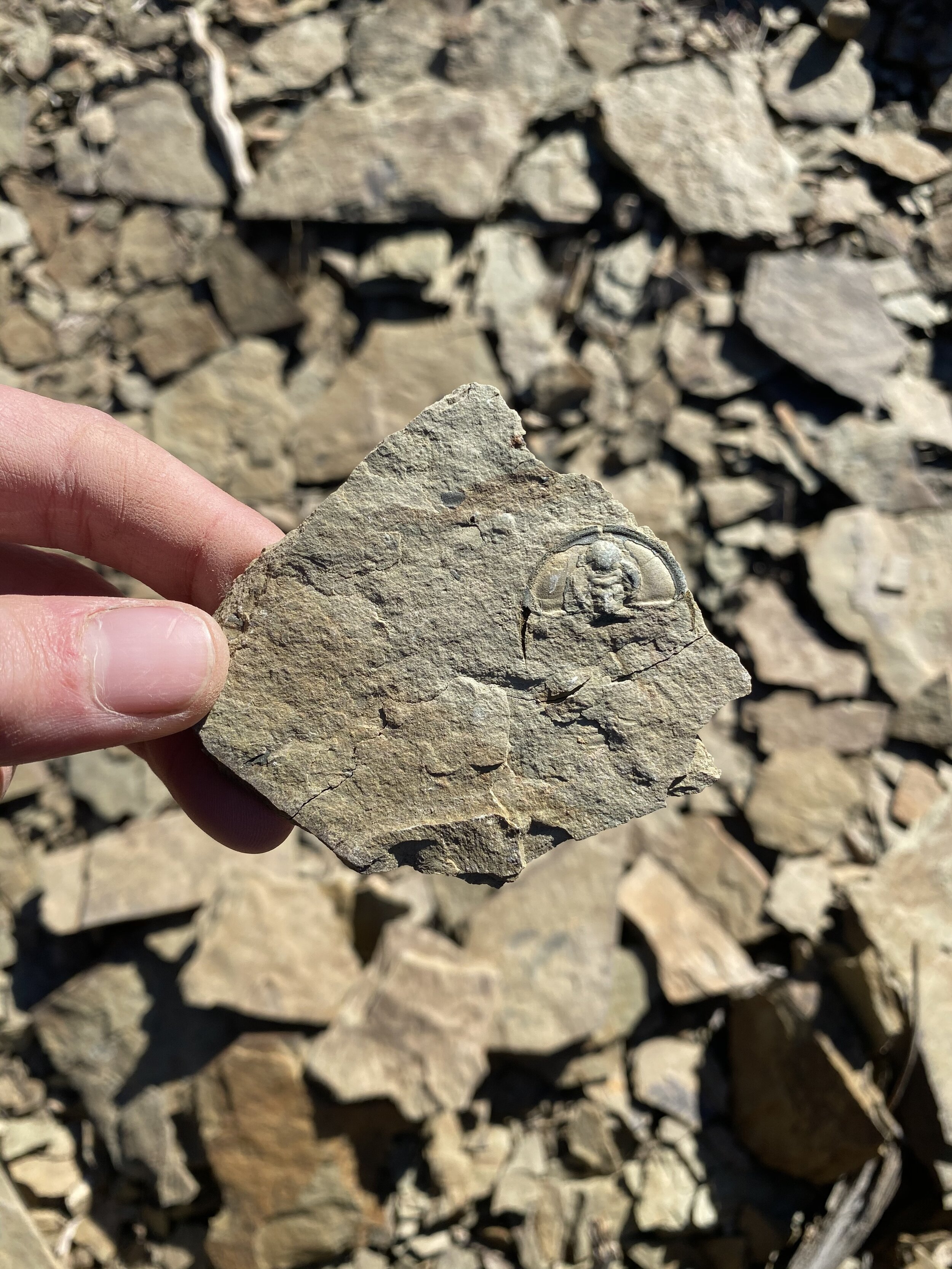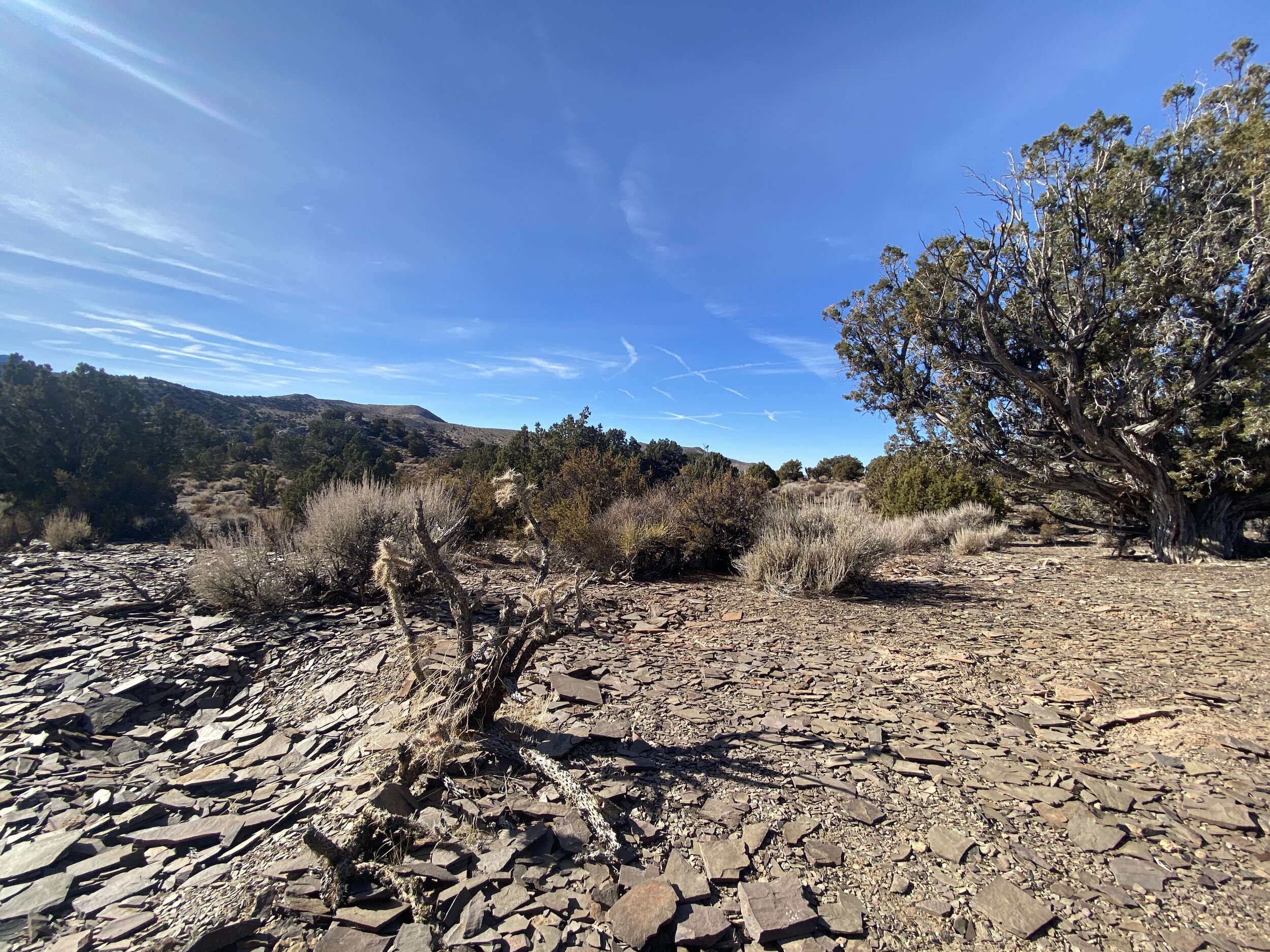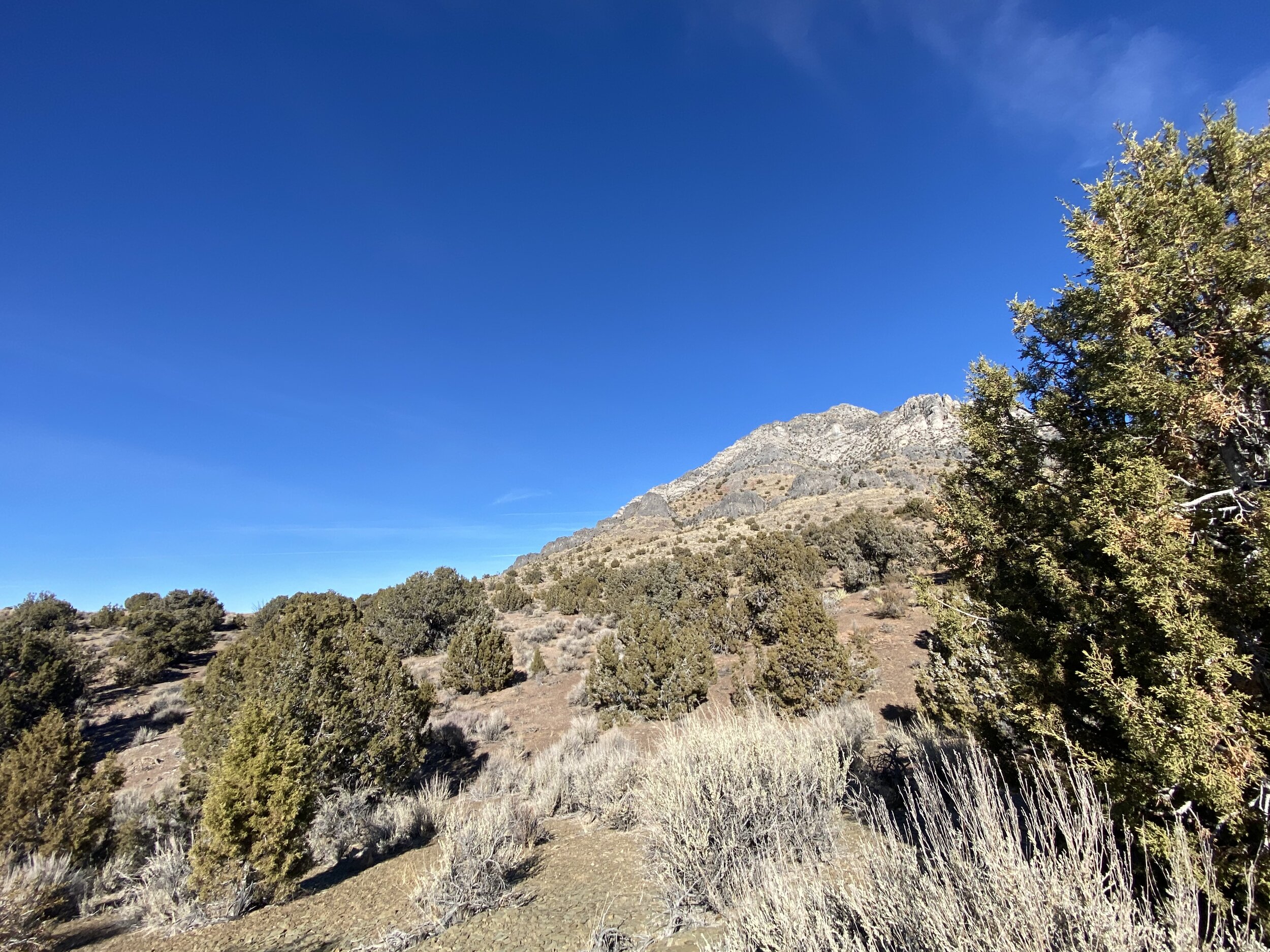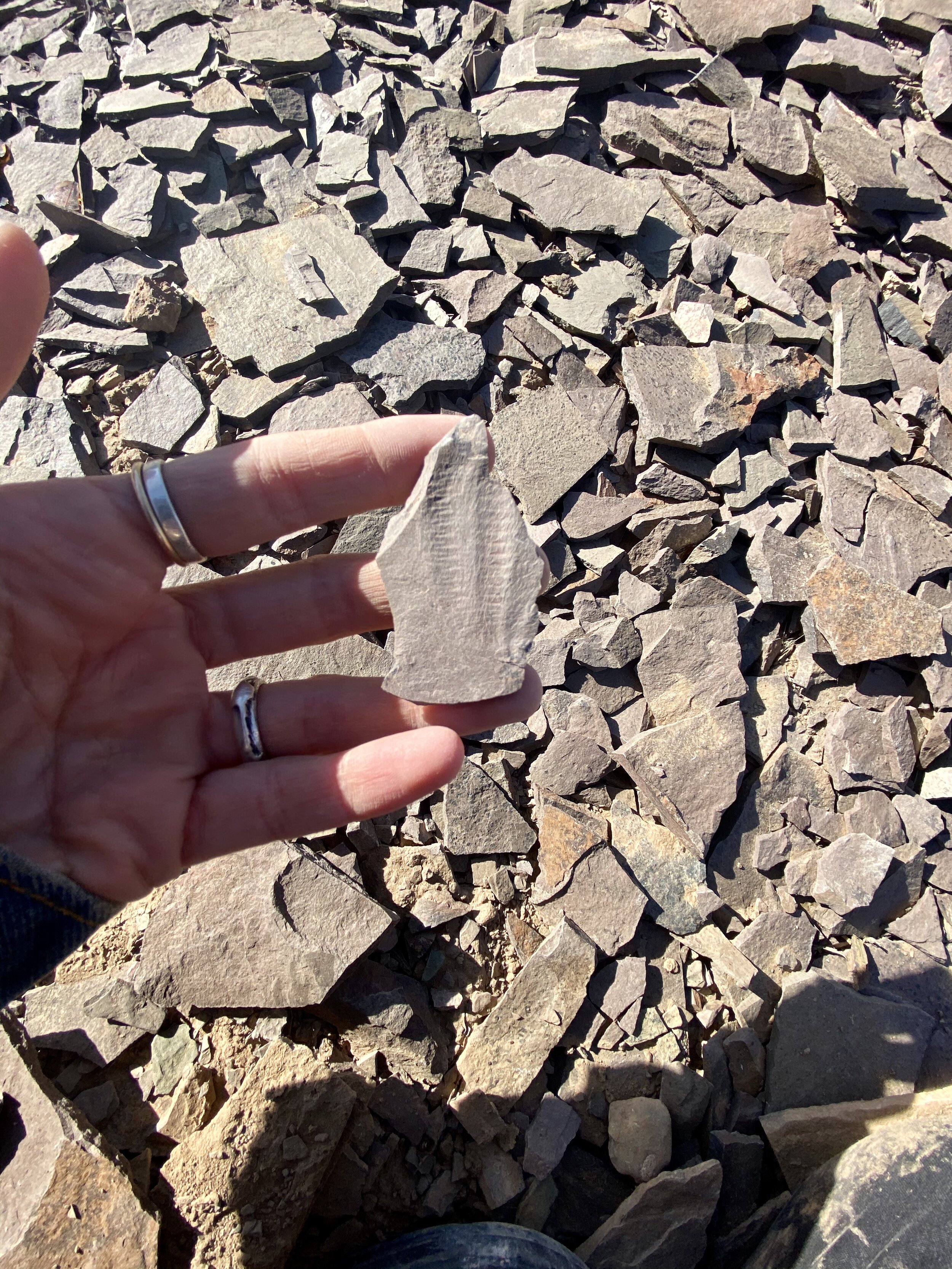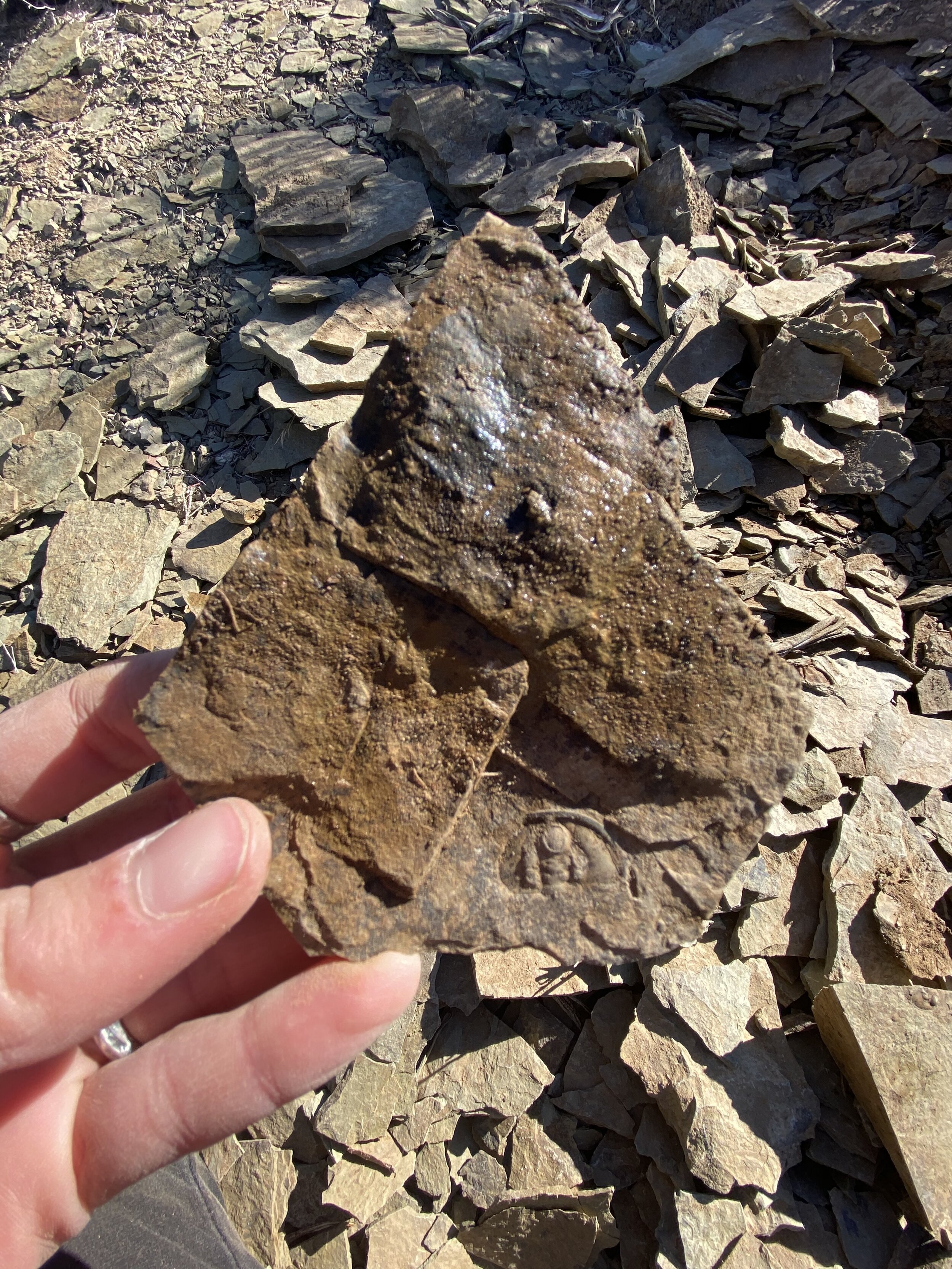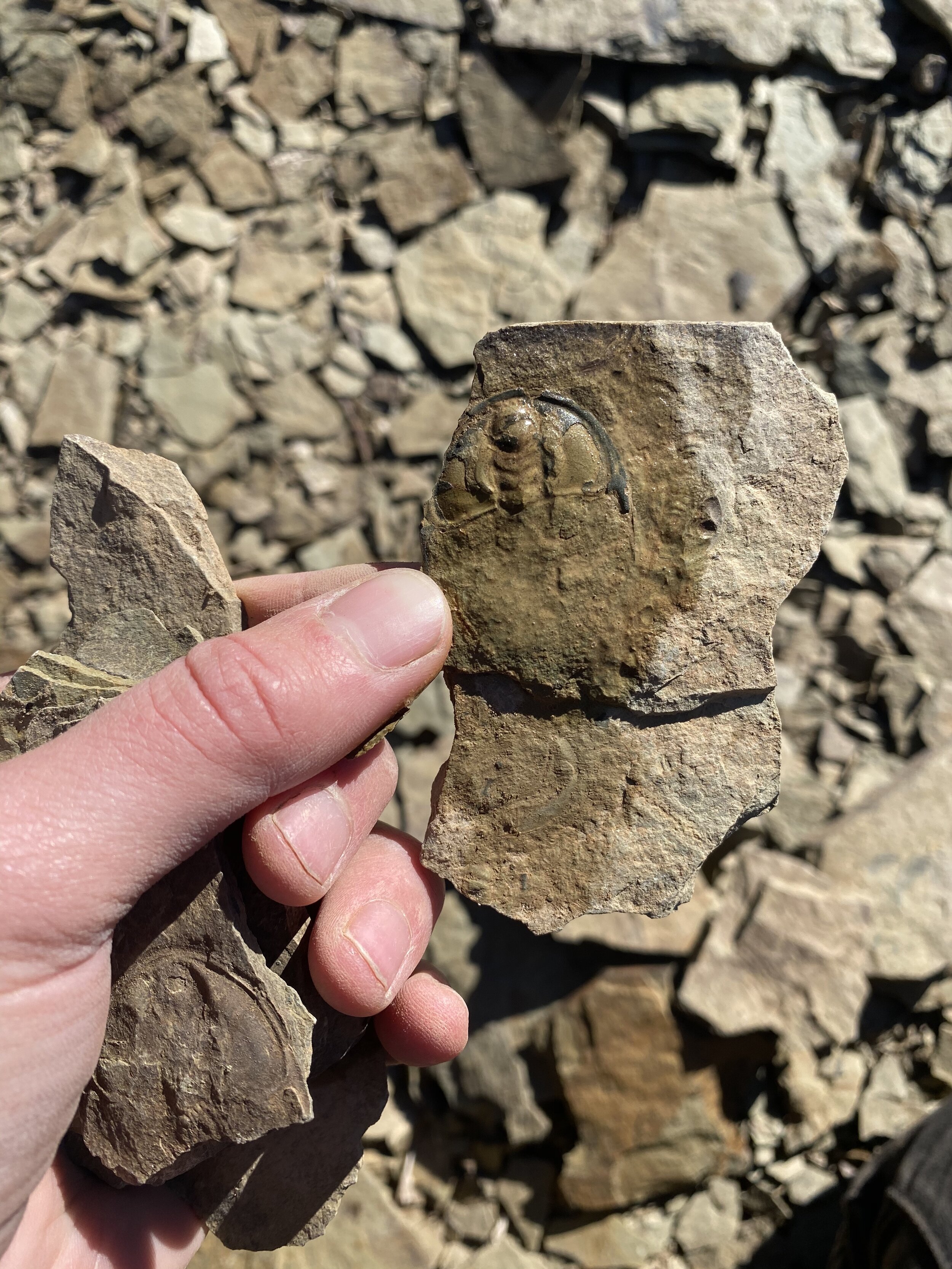turquoise mining in Tonopah, NV
after a handful of years of visiting Mr. David Otteson at gem shows I was fortunate enough for him to take me out for a day of turquoise mining outside of Tonopah, Nevada.
first off, lets talk turquoise. did you know that about 90% of turquoise on the market today is stabilized? what does stabilization mean? Stabilized turquoise is a process of hardening turquoise rough so it can be set into jewelry. Stabilization has been going on since the 1950s. Essentially, soft turquoise is hardened with a special kind of epoxy, to make the stone much harder and resistant. Many turquoise connoisseurs can quickly tell the difference between natural vs. stabilized by licking the stone. If you tongue sticks (especially on the matrixes) - its natural. Only higher grade turquoise can stand the elements of being set into jewelry. So most everything that is stabilized is lower grade, usually called “chalk”.
most turquoise pieces you own, are stabilized. Today, its pretty rare to come across jewelry that isn’t and if it is natural, you’ll know it by the price. (I use a lot of natural stone in my work, which reflects my prices.) Something I personally admire about natural turquoise, is that it changes with you throughout a life time. it absorbs your skins oils, and reacts to the climate that it’s living in. So when you go to pass down a piece of natural jewelry one day, you truly are passing a piece of yourself onwards. next time you go to buy a piece, ask the jeweler more about the turquoise!
to the left is “chalk turquoise and to the right is high grade turquoise
the ottesons have claims on a variety turquoise/varscite mines in Nevada. they are three generations of miners, who have claims on some of the most sought after turquoise in the world. specifically the Royston mine. the Royston claims were first discovered in 1902. The Royston mine produces some breath taking turquoise ranging in color from a deep sky blue to dark greens. Often the colors run together in the same stone with the golden brown mottled or webbed matrix. The mine currently produces some very high grade material, but in limited quantities. Turquoise mining is no joke! The Nevada heat is quite literally deadly. And if you don’t start early, you may have the ravens circling you by high noon!
I was fortunate enough to be brought to the easter blue mine and the royston mine.
it was rough digging at the easter blue mine. the otteson’s use both mechanical digging, and dynamite to expose new veins of turquoise. the road up to the mine was a bumpy, rough one! but those are always my favorite. it lead to a great view of the valley below.
but real quick, would you like to know how the earth makes turquoise?
Turquoise is a hyrous phosphate of aluminum, which contains a small percent of copper. Copper is what creates the blues, where turquoise that has more of an association with iron is often more green. If the mineral contains zinc, the turquoise mineral will be a yellowish color. Turquoise is formed when a chemical reaction occurs when water containing specific minerals such as copper or aluminum leaks/seeps through rock. Add heat, water, and pressure, than mix well! Turquoise forms in “veins”, which can then latter form into clumps or nuggets.
Deposits are found in Arizona, Colorado, New Mexico, California, Nevada, Virginia, and Utah. Natural turquoise is considered one of the highest value minerals in the world by collectors. American turquoise is valued by its matrix pattern, color, hardness, and origin. Some of the most valuable turquoise comes from Iran, but turquoise formed in southwest is now known to be of the most valuable in the world - mainly the Royston and Kingman mine being the most famous and sought after.
after hiking around the easter blue mine, we made our way over to the Royston mine, where are prospects were much better. however the sun started become our biggest enemy. it took quite a bit of digging, but we found some nice pieces. I was lucky enough even to find a few nuggets. lots of Royston ribbon was unearthed as well.
all and all, it was a dream come true to go out with Mr. Otteson and learn more about the family’s history in the area, as well as to dig beside a turquoise legend!
most pieces I make, I try to use natural turquoise. which reflects the price point. when wearing natural turquoise jewelry, one must be very careful. turquoise is very porous when not stabilized - so chemicals, specifically those carried through water, can affect and deteriorate stones. I’ve known bartenders who have worn natural rings during work, and completely destroy the natural turquoise in their pieces!
as you all know, I cut most of my stones as well - when cutting turquoise, stones need to be “backed”. placing the piece in a steel epoxy, to harden the back and make sure the pieces don’t crack, as well giving them some cushion well set in pieces.
above are just a few of the pieces cut and framed in silver - that were dug besides mr. Otteson. these pieces have raw character, and will be one of the 10% of turquoise pieces in the wild, that can claim to be natural!
citations:
Facts about Turquoise. History Of Turquoise. (n.d.). Retrieved December 13, 2022, from http://www.historyofturquoise.com/facts-about-turquoise/
Royston Turquoise mine. PuebloDirect.com. (n.d.). Retrieved December 13, 2022, from https://www.pueblodirect.com/pages/royston-turquoise-mine
garnets along the salmon river
what were we ‘hounding? ironic that at one of the salmon river’s largest rapid, lays thousands of ruby red garnets. to be exact, these are almandine garnets crystals, in schist. garnets come in many shapes, sizes, and colors, but Idaho specifically is home to some of the most famous garnets on earth. the star garnet. (although, what i found here weren’t star garnets!)
what are garnets? often associated with the heart, blood, life force, and fire, garnets have symbolized loved, passion, and success over centuries. coming in on the hardness scale at 7.5-8.5, this tough guy has proved durable enough to have been found in remnants of jewelry dating back to the bronze age. also tough enough to withstand heat, one of the few gem stones that can be cast in place in the art of jewelry making. perfect garnets have 12 sides. almandite garnets hold the color of deep brown, to purplish red.
garnets are often found inside a host rock. often sedimentary or ingenious. as far as this specific area goes, i wasn’t able to find much on what exactly said host rock was. my best guess was some kind of mica schist. brown and black shiny flecks encased bigger pieces that still had garnets inside. sources say that garnets can be found in both granite and basalt - but, since this area is on the river, it makes sense the host is sedimentary. when the rapids and the river run high each spring, the power of the water helps to continually expose new garnets, leaving them scattered underneath rocks and laying in the sand. the garnet group as a whole, is relatively resistant to weathering
not to far from the road, at initial first sight, this area would look like your normal large beautiful rapid. climbing down into the rocks, pockets of sand require a little bit of digging, until you see your first squarely shaped red garnet poking though.
sources: “Garnet Group from Ruby Rapids.” Mindat.Org, 2004, www.mindat.org/locentry-456944.html.
disclaimer. on my hounding journeys i refrain from giving the exact locality of the area, but give enough clues, that with any amount of research, you could more than likely find the area. if you have any questions or want to know more about said place, let me know! if you happen to go out, always follow leave no trace practices, as well as the BLM’s guidelines to collecting and harvesting fossils or rocks in the given area.
trilobites in southeastern nevada
finding fossils in nevada!
where were we ‘hounding? in south eastern nevada, there is a hill, (well, many hills) that preserved a warm shallow sea that was reality around 520 million years ago. here six layers of sediment settled. around 15 million years ago, volcanic activity, earthquakes, wind and water shaped and re-exposed these layers, giving way to the shale where these little guys got caught in the then muddy murky waters, awaiting their extinction. add heat, pressure, and time, and here you have a hill full of this preserved scaly little creature.
what are trilobites?
hard shelled, sea dwelling creatures. they existed in ancient seas that covered areas of north america around 530 million years ago, but this specific species at the site is believed to be the oldest known to the land - around 500 million years old. belonging to the Olenellidae family, six types of fossil remains are located in the shale deposits here.
usually when mister trilobite dies, the shell separates from the body. the body consists of the head (cephalon) a thorax with a variable number of segments, and a tail (pygidium). when searching you can often find the heads, tails, or thorax, but its often hard to find a fully preserved specimen.
around 520 million years ago, the olenellidae family abruptly disappeared. scientists guess that the warm shallow and highly oxygenated waters were disrupted. potentially the strike of a meteorite… the sea changed, becoming cold and oxygen poor. many species at this time became extinct. however, some tribolite families survived onwards of 100 million more years.
after searching for well over an hour or more through the tailings of others’ diggins, i had feeling about a certain hill that was just glistening in the right light to catch my eye. up here, a lot of shale was exposed. and i hit the jackpot, as this is was a mass trilobite grave. bummer for the little guys.
disclaimer. on my hounding journeys i refrain from giving the exact locality of the area, but give enough clues, that with any amount of research, you could more than likely find the area. if you have any questions or want to know more about said place, let me know! if you happen to go out, always follow leave no trace practices, as well as the BLM’s guidelines to collecting and harvesting fossils or rocks in the given area.
sources: The Editors of Encyclopaedia Britannica. (2018, October 18). Trilobite. Retrieved from https://www.britannica.com/animal/trilobite


